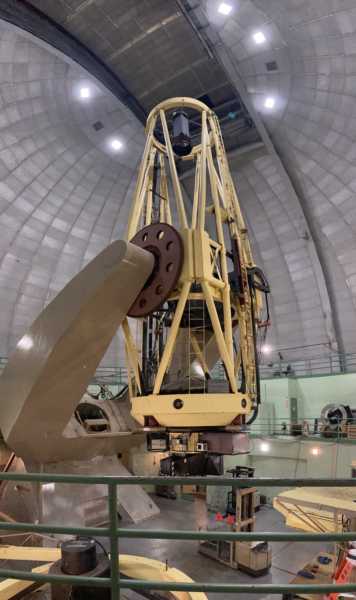Observations of Solar Analog Field Stars from the Hamilton Echelle Spectrograph at Lick Observatory
Observations of Solar Analog Field Stars from the Hamilton Echelle Spectrograph at Lick Observatory
About this collection
- Extent
-
1 digital object.
- Cite This Work
-
Lubin, Dan; Holden, Bradford P.; Stock, Camille; Melis, Carl; Tytler, David. (2023). Observations of Solar Analog Field Stars from the Hamilton Echelle Spectrograph at Lick Observatory. UC San Diego Library Digital Collections. https://doi.org/10.6075/J0X34XN2
- Description
-
This observing program used the Hamilton Echelle Spectrograph on the three meter Shane telescope at Lick Observatory to obtain high resolution spectroscopic observations of 211 solar analog field stars. Observations were made over 22 nights between February 2013 and January 2014. Our criteria for selecting solar analogs include: (1) effective temperature within ±500 K of solar; (2) -0.3 < [Fe/H] < +0.3; (3) absolute magnitude within ±0.5 of the Hipparcos main sequence (Wright 2004: AJ, 128, 1273). Effective temperatures were taken from the third version of the Geneva-Copenhagen survey (Holmberg et al. (2009: A&A, 501, 941), with temperature, metallicity and isochrone age estimates refined by Casagrande et al. (2011: A&A, A138). An additional selection criterion is that a star have no indication in the SIMBAD Astronomical Database of being part of a double or multiple system, or being a chromospherically active variable such as type RS CVn or BY Dra (note that SIMBAD entries are periodically updated and users should recheck this criterion). Table 1 (in the Readme) lists the program stars. Each ascii text file in this collection contains one spectrum, with the star's Hipparcos catalog identifier (HIP) as the filename. The columns in each file are, left to right: (1) Hamilton Echelle Spectrograph order number (integer); (2) Wavelength (Ångstroms); (3) Flux (machine units); (4) Variance (such that the signal-to-noise ratio and be estimated as the Flux divided by the square root of the Variance). Information about the Hamilton Echelle Spectrograph, including the table of orders, can be found at https://mthamilton.ucolick.org/techdocs/instruments/hamspec/index.html/
- Creation Date
- 2013 to 2014
- Date Issued
- 2023
- Principal Investigator
- Research Team Members
- Methods
-
To reduce the observations, we used the Hamilton spectrometer pipeline that is part of the XIDL package (https://github.com/profxj/xidl) The software requires both the science data and a number of calibration frames. The calibration frames include arc lamp spectra, flat field images that trace the orders, and "pixel flats." Specific details of the pipeline's application to this dataset can be obtained from the corresponding author.
- Funding
-
NASA 80NSSC21K1947 and 80NSSC20K0441.
- Corporate Names
- Topics
Formats
View formats within this collection
- Identifier
-
Identifier: Carl Melis: https://orcid.org/0000-0001-9834-7579
Identifier: Dan Lubin: https://orcid.org/0000-0002-5899-8358
- Related Resources
- Information about the Hamilton Echelle Spectrograph, including the table of orders, can be found at https://mthamilton.ucolick.org/techdocs/instruments/hamspec/index.html/
Software
Other resource
 Library Digital Collections
Library Digital Collections
